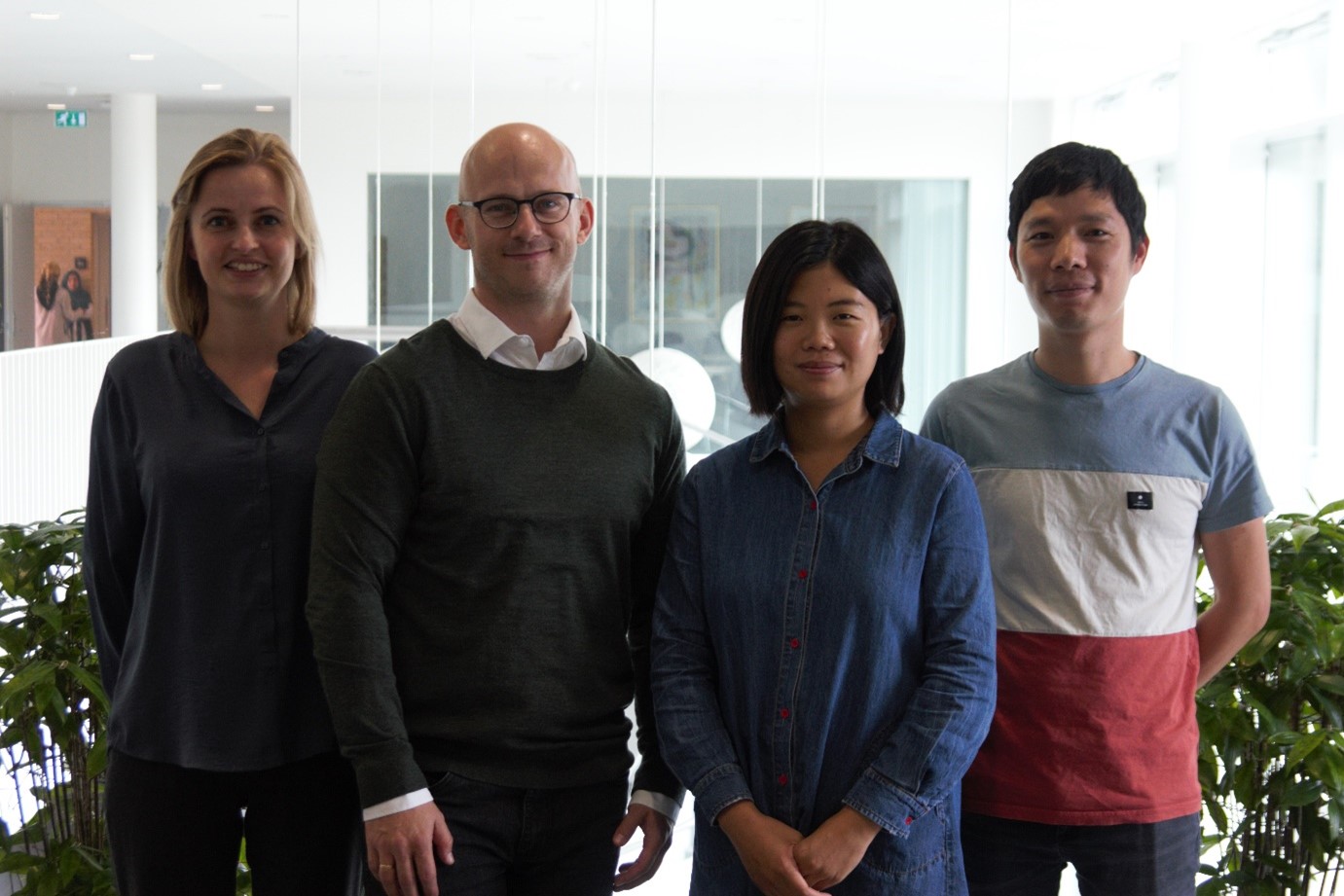Who are Omiics?
EU FET Open PRIME project brings together partners from across Europe into a strong multi-disciplinary team. Today we meet Omiics, a spinout from Aarhus University in Denmark, which specializes in harnessing customized and state-of-the-art RNA sequencing techniques for profiling RNAs. These technologies are instrumental in studying the roles of RNAs in disease development and therapy.
Next Generation Sequencing (NGS) technology holds immense promise for unveiling profound biological insights. Yet, its complexity often deters researchers from fully capitalizing on its potential. Valuable data is frequently overlooked due to either insufficient extraction or miscommunication between bioinformaticians and researchers. To address this, the Omiics team customizes optimal solutions for each project and maintains open communication with clients and collaborators. Their goal is to ensure that no valuable insight is lost in the intricacies of NGS, empowering researchers to maximize the value of their data.
What does Omiics do within EU FET Open PRIME?
The aim of PRIME is to develop an autonomous implantable living cell system with engineered bio- computing logic gate that sense, compute, and actuate epileptic seizure suppression. These engineered cells will be implanted into the brain and will co-exist with natural neural tissue. How is to better use the deregulation of RNAs in the cerebrospinal fluid (CSF) to sensing the cell circuits to suppress seizure? How is the performance of the implanted cell device? How does the device influence the brain? Omiics has optimized RNA sequencing workflows to profile the RNAs to help to answer these questions.
Dr. Morten Venø and Dr. Yan Yan from Omiics lead the PRIME project with significant support from their team. Dr. Morten is co-founder and Chief Technical Officer of Omiics. He has been working with RNA NGS for 15+ years on building bioinformatic analysis pipelines. Dr. Yan is co-founder and Chief Scientific Officer of Omiics. She has more than 10-years’ experience in experimental techniques of RNA NGS and specializes in handling low-RNA input samples.
Within the PRIME project, Dr. Morten spearheads the bioinformatics analysis and the implementation of new analytical approaches, and Dr. Yan leads the design of experimental proposals aimed at optimizing RNA sequencing methods to meet PRIME’s objectives. They’re making sure the project uses the best technology and methods to reach its goals.
What are the challenges of this project?
The technical challenge of this project lies in the low RNA content of CSF samples and the limited sample volume from animal models (10-50μl). Through meticulous optimization of sample handling and sequencing protocols, Omiics has surmounted these obstacles, enabling the robust detection of genes and small RNAs even with small sample volumes (50μl of CSF and 10μl of serum). Moreover, the incorporation of spike-ins in experimental protocols facilitates absolute quantification of RNA molecules, providing invaluable insights into their abundance and dynamics within biological systems. For PRIME data, Omiics has developed several new analysis pipelines, including RNA fragment analysis for detecting the glial cell line-derived neurotrophic factor (GDNF) gene in CSF and transfer RNA-derived small RNA (tsRNA) analysis for identifying tsRNA deregulations in CSF. These advancements enable Omiics to process a larger number of samples from the PRIME project quickly and effectively. The data generated from Omiics’ workflow will offer detailed insights into how RNA is affected in epilepsy and how RNA changes occur due to the implantation of the cell device.
This information will help the PRIME team better understand how deregulated RNAs can be used to sense cell circuits and suppress seizures using the implantable cell device.
How does Omiics collaborate with other partners across the PRIME project?
Omiics actively shares their findings and workflows in Plenary and Review meetings. In the work package (WP) of Preclinical Experimental Testing and Validation Platform (WP5), Omiics collaborates closely with RSCI and UniFE to characterize small RNA profiles in epileptic animal models and patients. Additionally, Yan Yan collaborates extensively with Denmark’s Aarhus University and Italy’s University of Ferrera in WP3, focusing on circuit design and extracellular vesicle studies, and assists in organizing update meetings for WP3, WP4, and WP5. Dr Morten Venø is also actively involved in discussion and update meetings for WP2.
What excites the team most about the PRIME project?
The multidisciplinary nature of the PRIME project provides Omiics with opportunities to broaden their scientific perspectives, foster collaborations, and explore entrepreneurial ventures. Dr. Morten Venø and Dr. Yan Yan encapsulate this sentiment eloquently, expressing enthusiasm for the diverse array of perspectives and expertise converging within the consortium.
“Being part of the PRIME project is an exciting endeavor for me. It brings together molecular biologists, engineers, and computer science experts, offering ample opportunities for learning and growth. To address the project’s challenges, we have optimized our workflows and implemented new techniques, bringing our technology closer to real-world clinical applications and expanding the market for our services. Moreover, this consortium has expanded my professional network, which is vital for both my career and our business,” expressed Yan Yan. “It is exciting to have the opportunity to be a part of a visionary project such as PRIME, which relies so heavily on the expertise of partners from diverse scientific and professional areas. PRIME allows us to develop our techniques to meet the high requirements this project demands, and importantly, evaluate and improve the analysis and output in collaboration with the skilled partners in PRIME,” expressed Dr Morten Venø.
What are the next steps/milestones for Omiics within the PRIME project?
Omiics remains committed to optimizing RNA sequencing workflows, encompassing both experimental techniques and bioinformatic analysis pipelines. These enhancements aim to extract valuable RNA profile information from challenging samples, shedding light on RNA deregulation in epilepsy and the efficacy of the implanted cell device. Through continuous refinement, Omiics strives to deliver accurate and efficient insights into these critical areas.
Moreover, Omiics maintains its close collaborations with fellow partners within the PRIME project. By sharing findings, workflows, and expertise across various work packages, Omiics fosters a collaborative environment conducive to achieving the project’s objectives.
Overall, Omiics reaffirms its pivotal role in advancing the goals of the PRIME project, leveraging its expertise in RNA sequencing and analysis to deepen our understanding of epilepsy and pioneer innovative solutions for seizure suppression.

Omiics is one of several multi-disciplinary European partners working on the PRIME project, funded by the European Commission’s Horizon 2020 Research and Innovation programme. The PRIME project aims to prevent epileptic seizures by developing autonomous implantable living cell systems for the brain.
Led by Walton Institute at South East Technological University, EU FET OPEN PRIME project’s consortium of European partners is made up of Tampere University Finland, Università degli Studi di Ferrara Italy, EPOS-IASIS Cyprus, Aarhus University Denmark, omiics Denmark and Royal College of Surgeons in Ireland (RCSI) in Ireland.







